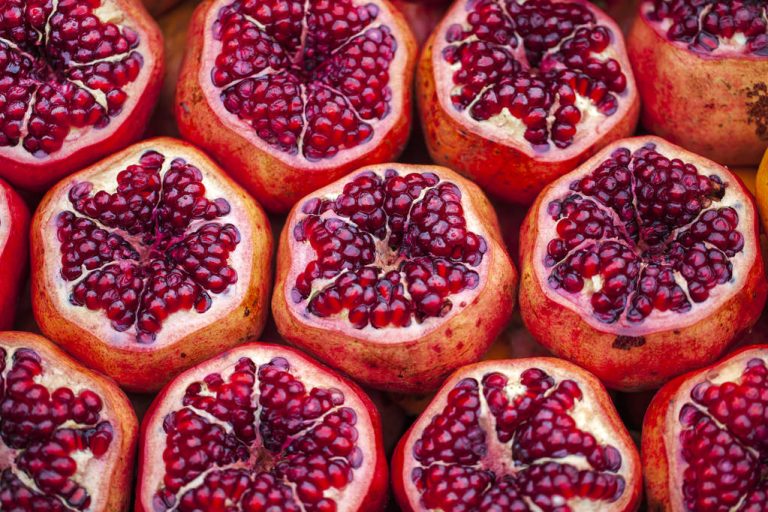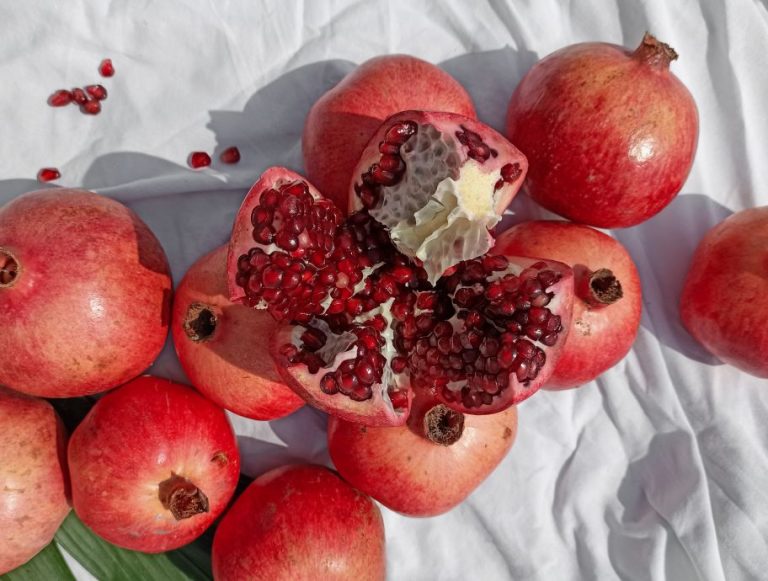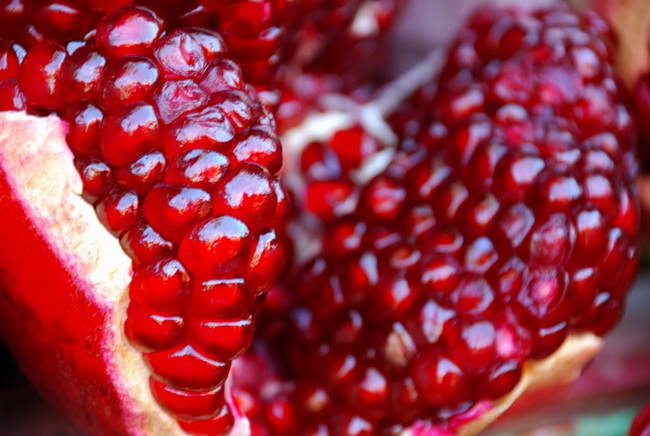Unlike some of the newer superfoods, the pomegranate has been known in this country since the Middle Ages. Hardly anyone seriously doubts that he is healthy. But what about sustainability?
The bright red pomegranate with its many seeds is often referred to in tradition as the food of the gods. Some even believe that it was a pomegranate that Adam and Eve ate that led to their expulsion from paradise. The pomegranate has been known and loved as a natural household remedy or special treat for the upper class for several thousand years.
Modern studies certify numerous possible medicinal effects of the fruit, its seed and its juice. In addition, the pomegranate should be rich in vitamins, minerals and healthy secondary plant substances. The fruit is not only delicious, but is also said to be extremely healthy in any form, a real superfood.

The origin of the superfood pomegranate
The pomegranate has been known and widespread in Europe for so long that it is no longer possible to say exactly where it originally came from. He probably comes from Central or Southeast Asia and reached the Middle East and various campaigns in ancient times to (Southern) Europe. The Spaniards, in turn, eventually brought the pomegranate plant to Latin America.
Today, the pomegranate tree is grown commercially primarily in India, China, the southern United States, Latin America, the Middle East, Spain and Italy. The plant does not tolerate low temperatures and prefers tropical or subtropical climates, so in Central Europe there are only isolated cultures in heated greenhouses, but in southern Europe it can already be found without a greenhouse or growing wild.
Harvest time for the fruits, which are actually berries but are called apples because of their appearance, is from September to December.
The pomegranate seeds and their pitfalls
Only the seeds of the pomegranate are eaten, as the white flesh tastes very bitter. However, the seeds are firmly attached to the rest of the fruit, so it takes a special technique to extract them. Caution is advised: the juice of the fruit has a strong staining effect, and stains on clothing can hardly be removed.
When storing, make sure that the apple of paradise is never exposed to excessive heat. On the one hand, the pomegranate can be kept for several weeks if stored in the refrigerator or in a cool, not too humid place. On the other hand, the shell bursts under the influence of heat and the pomegranate seeds splatter everywhere – the berry also owes its name to this “explosive” property.
Cut and eat pomegranate properly
Cutting and eating a pomegranate properly is a real challenge. Peeling it makes only limited sense, because too much juice escapes.
Instead, we recommend rolling the ripe pomegranate back and forth on the kitchen worktop with the palm of your hand and applying little pressure to remove the stone. But beware: too much pressure will cause the seeds to burst, resulting in the (also very tasty) juice.
After rolling, remove the stalk at the top and make a radial cut in the pomegranate – like an orange. The upper half can then be bent open so that the seeds can be knocked out with a wooden spoon or something similar.
If you want to reduce the risk of juice splashes, open and core the fruit in a bowl of water. The pomegranate seeds taste great on their own, in muesli or in numerous dishes, from savory to sweet.
Make your own pomegranate juice
Of course, you can also buy pomegranate juice in organic shops. But the pleasantly sour juice is easy to make yourself. As with pitting, roll the pomegranate back and forth with your hand at first, but more often and with significantly more pressure. The pomegranate can then be squeezed with a press or by hand like a lemon.
The faster version: after rolling, simply cut off the stalk, insert a straw into the opening and enjoy the pomegranate juice straight from the fruit.
Pomegranate: calories, vitamins and other nutritional values
The pomegranate and its seeds are excellent sources of minerals and vitamins during the cold and wet season.
Thanks to its long shelf life, the pomegranate provided people with vitamin C, vitamin B1, vitamin B2 and B6, folic acid, vitamin E and beta-carotene as early as the Middle Ages.
However, the vitamin C content is not nearly as high as one often hears: oranges, for example, contain about six times as much of the important vitamin.
On the other hand, the pomegranate is relatively low in calories, 100 g contain 74 kcal.
In terms of minerals, the red giant berries mainly provide potassium, but also calcium, magnesium, phosphorus, iron and zinc.





